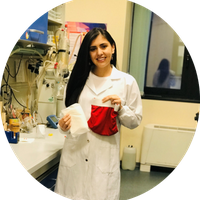Biotechnology & medicine
Randall Jeffrey Platt
His recording tool provides a video of genes turning on or off.

Latin America
Carolina Serrano
Her reusable, biodegradable, and low-cost diapers meet eight of the 17 Sustainable Development Goals.

China
Yue Shao
Pioneered development of embryo-free human embryology

Latin America
Ricardo Di Lazzaro
Cheap consumer genetic tests on the market so that anyone can improve their health using their DNA information.

China
Yi Shi
Revealing the pathogenic and transmission mechanisms of multiple epidemic viruses
